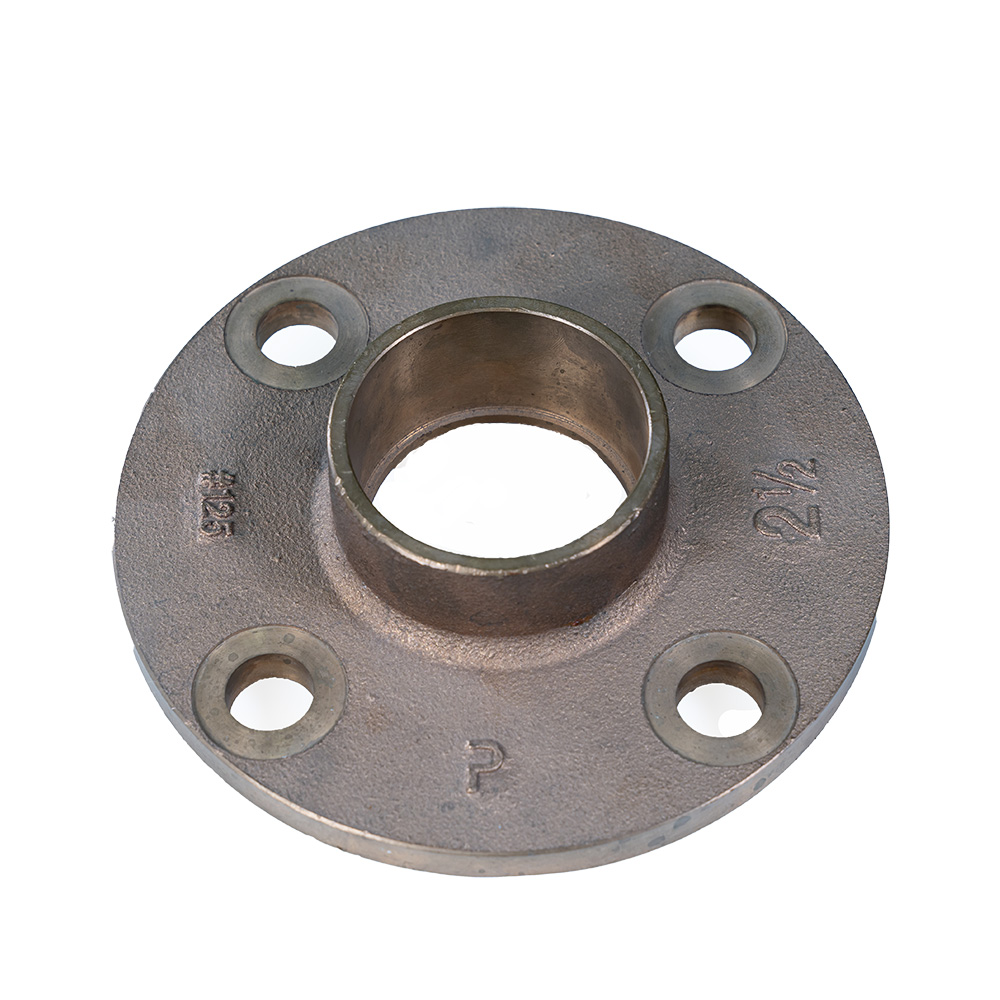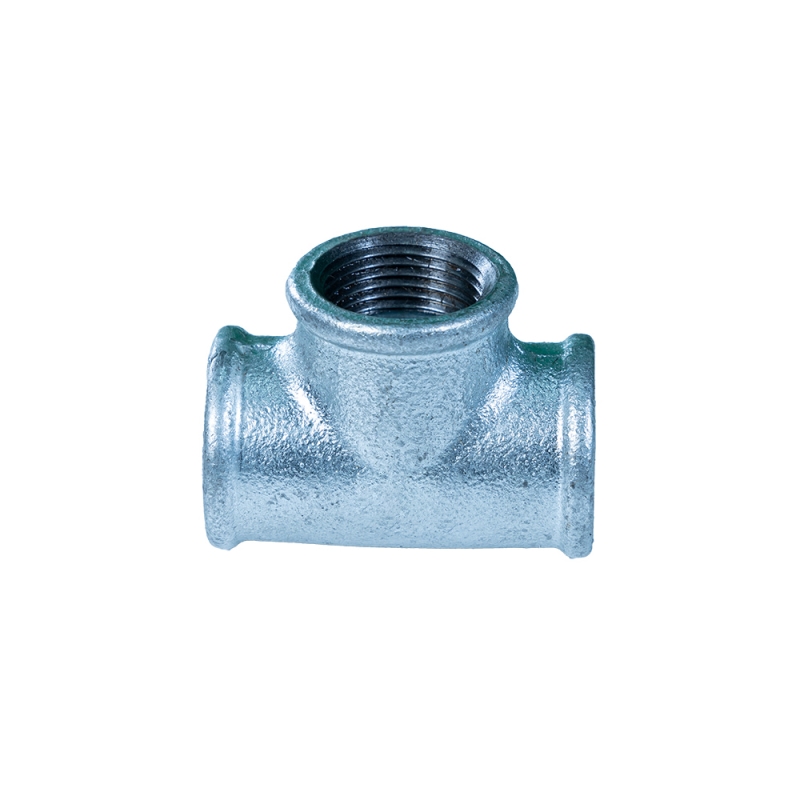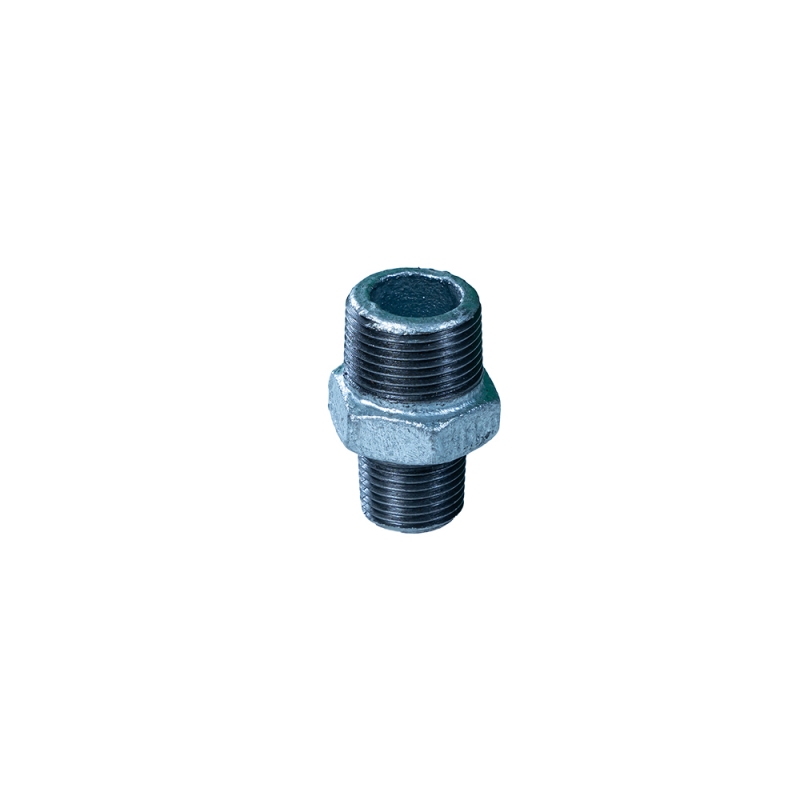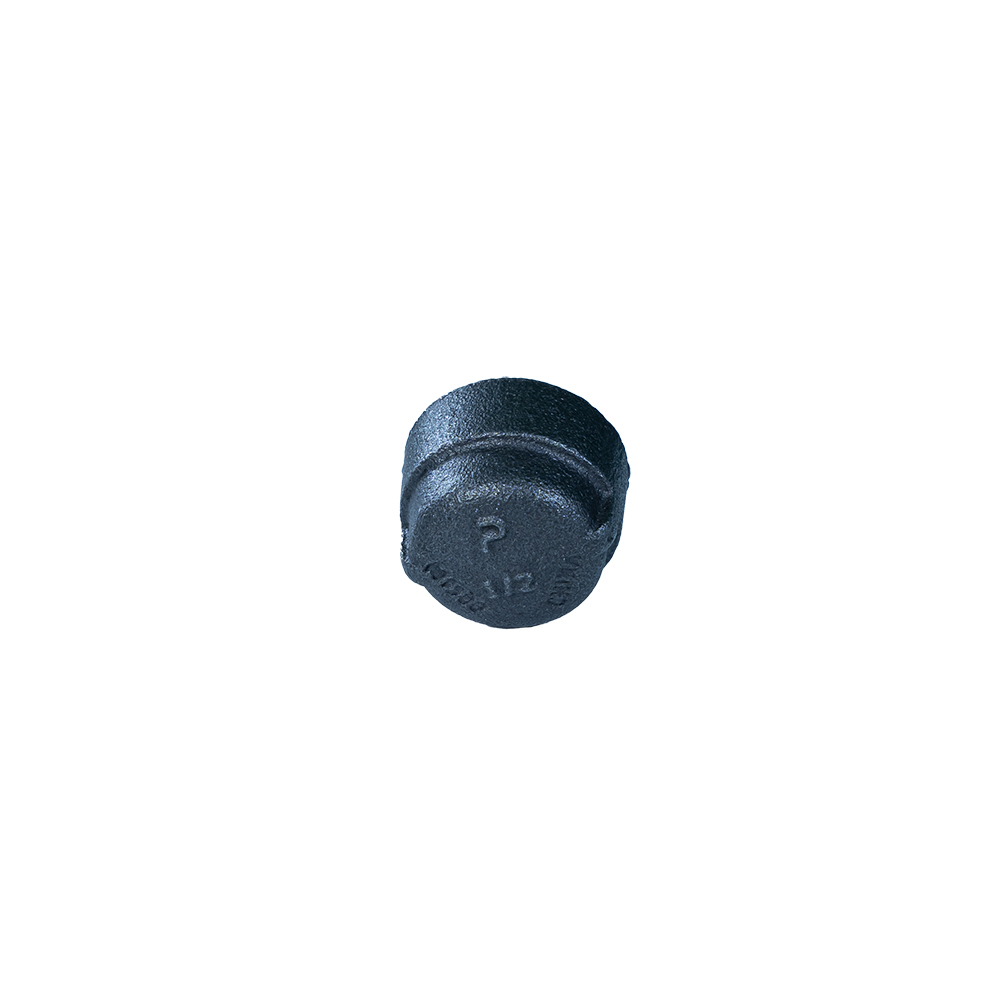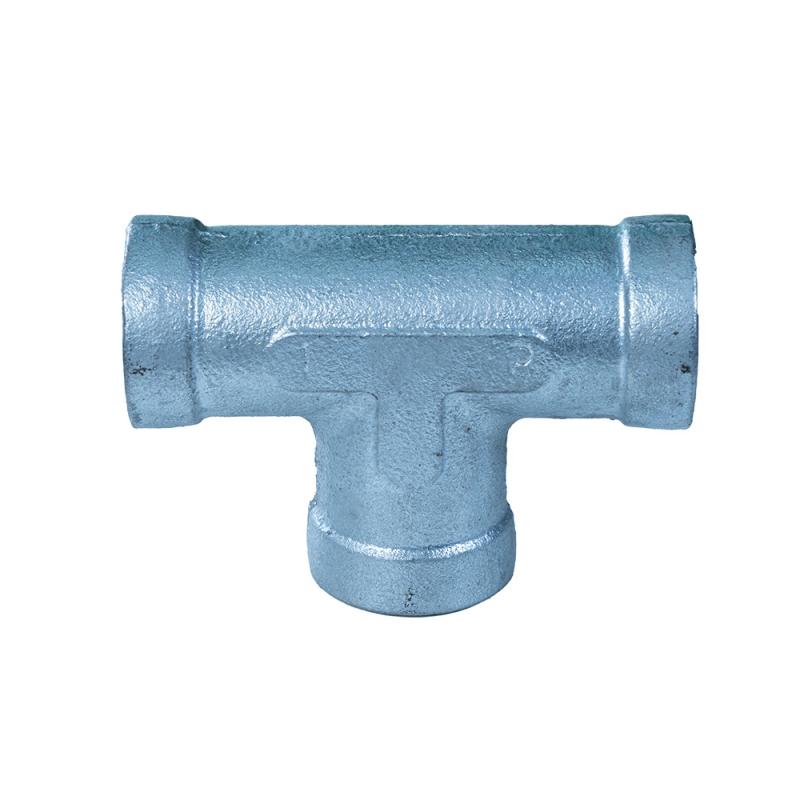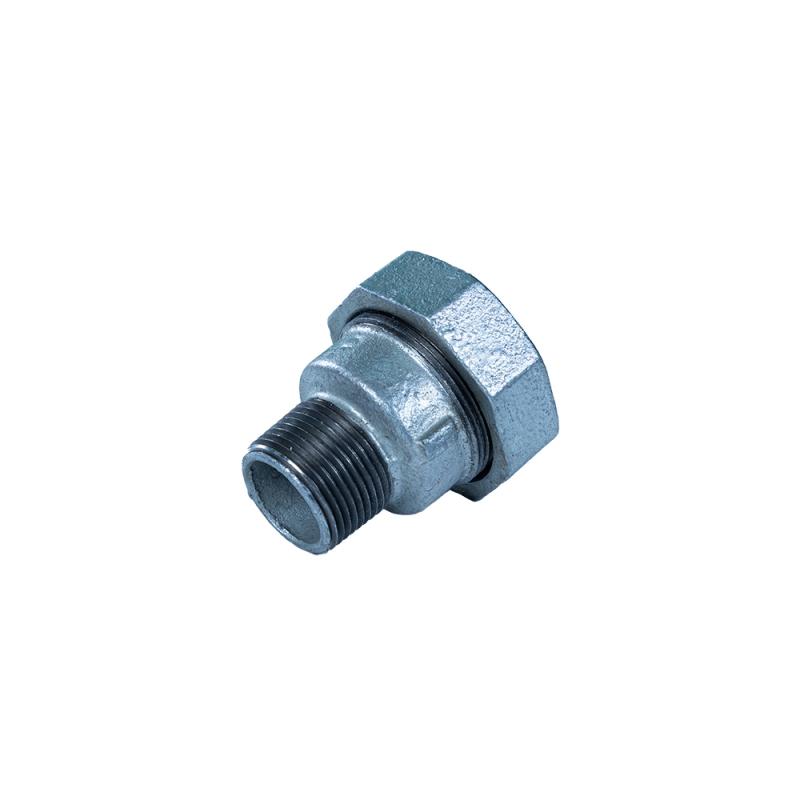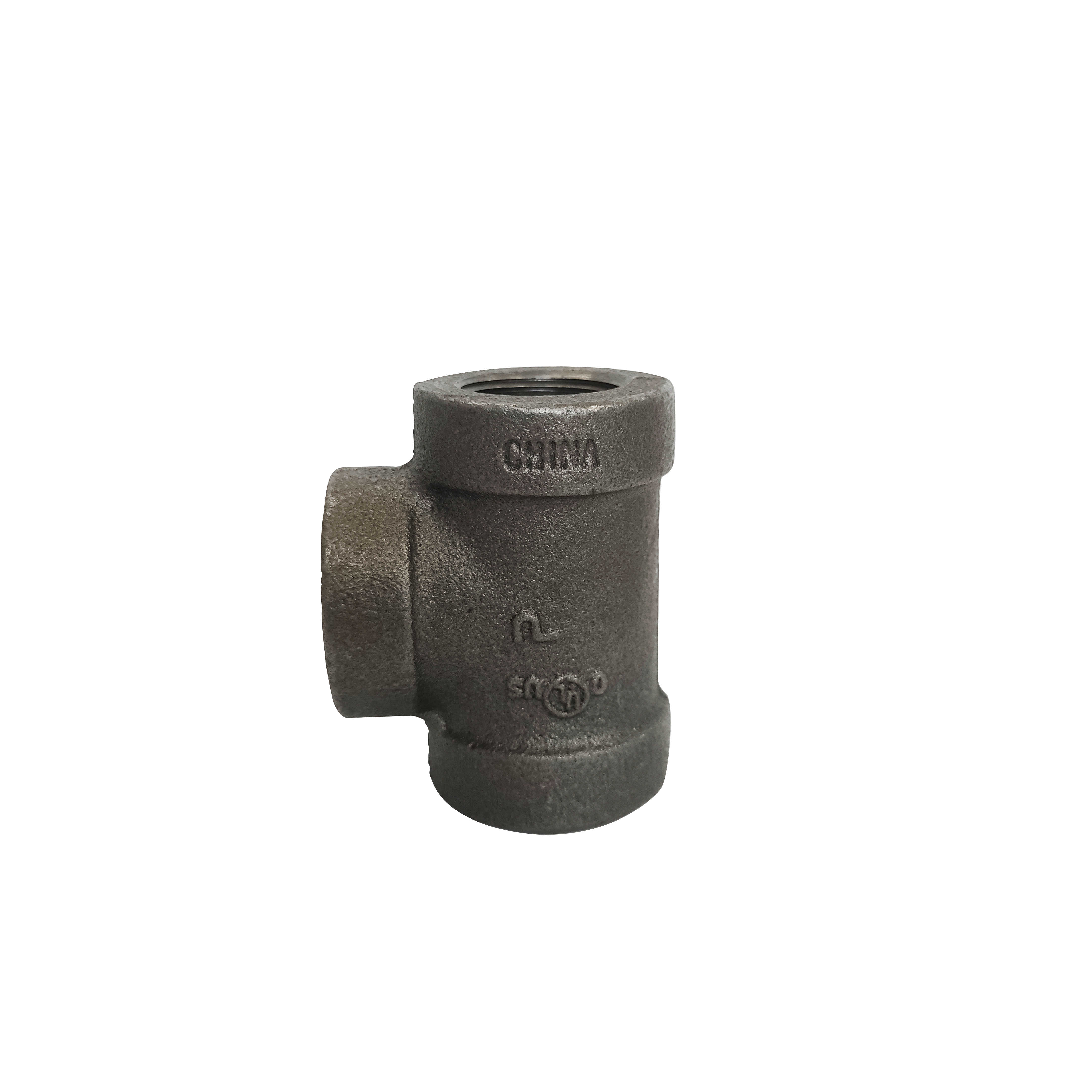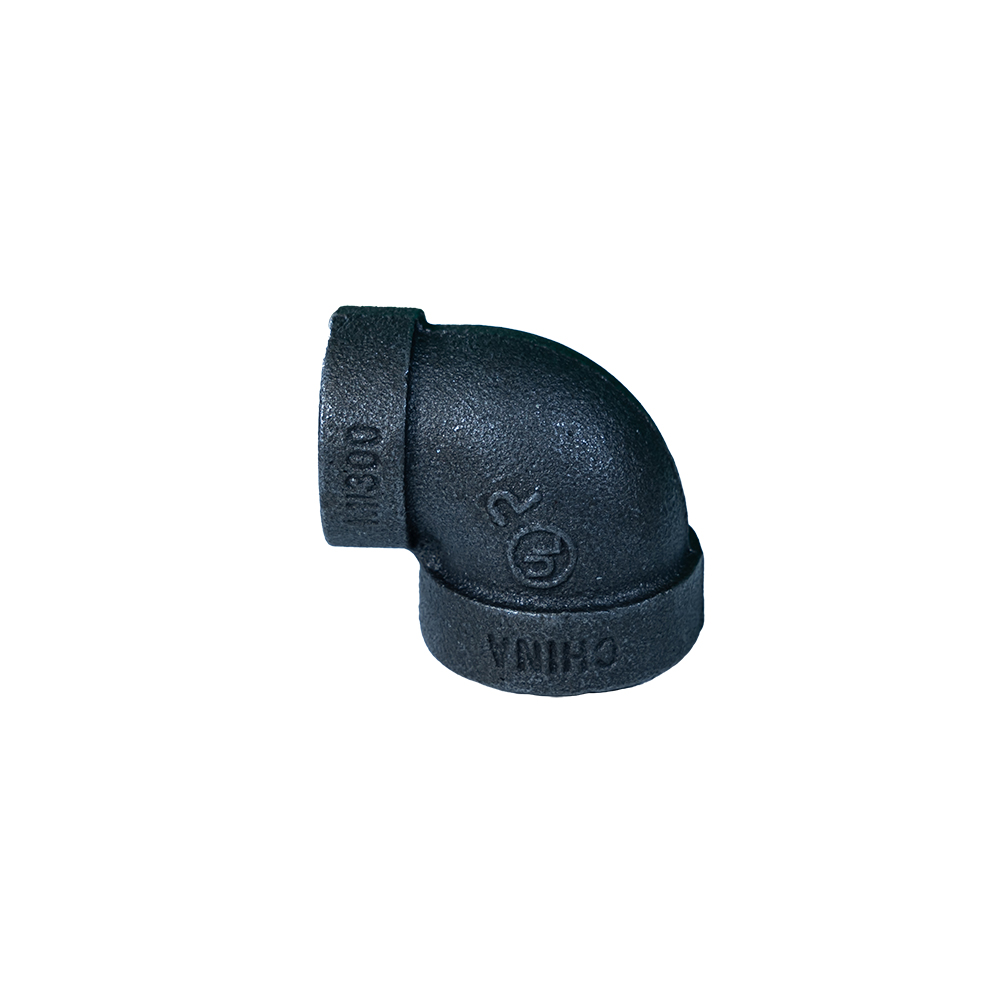In the complex world of industrial piping, fluid dynamics and system longevity are paramount. Engineers constantly seek innovative components that reduce operational costs, enhance safety, and extend the lifespan of critical infrastructure. Among these, the sweep bend stands out as a critical element, particularly the female and female 90° long sweep bend, designed to optimize flow characteristics and minimize system stress. This comprehensive guide delves into the technical intricacies, manufacturing excellence, and diverse applications of these essential fittings, offering insights for professionals aiming to achieve peak performance in their fluid transfer systems.
Industry Trends and the Evolution of Sweep Bend Technology
The industrial landscape is continuously evolving, driven by demands for higher efficiency, stricter environmental regulations, and robust infrastructure. In piping systems, this translates to a growing emphasis on minimizing pressure loss, reducing cavitation, and extending the service life of components, especially in high-velocity or abrasive fluid applications. Traditional short-radius elbows, while compact, often induce significant turbulence and pressure drops, leading to increased pumping costs, accelerated erosion, and higher maintenance requirements. This is where the long sweep bend demonstrates its distinct advantage.
Current industry trends highlight a shift towards more sophisticated flow control solutions. Data from a recent report by Grand View Research (2023) indicates that the global industrial valves and fittings market is projected to reach USD 90.1 billion by 2030, driven by rapid industrialization and infrastructure development. Within this growth, specialized fittings like the sweep bend are gaining traction due to their superior hydrodynamic properties. For instance, the oil and gas sector, with its aggressive media and high pressures, increasingly specifies long sweep bend fittings to mitigate erosion-corrosion and enhance pipeline integrity. Similarly, in water treatment and chemical processing, the focus on reducing energy consumption and maintaining fluid purity makes the smoother flow path of a sweep bend invaluable.
Technological advancements in material science, such as higher-grade stainless steels, duplex, and super duplex alloys, coupled with advanced manufacturing processes like precision casting and forging, have enabled the production of sweep bend fittings with unprecedented strength, corrosion resistance, and dimensional accuracy. The demand for specific configurations, such as the 4 long sweep 90 and those with precise dimensions like the 32mm swept bend or 50mm swept bend, underscores the industry's need for tailored solutions that meet stringent performance criteria.
Technical Parameters and Specifications of Sweep Bend Fittings
A sweep bend is characterized by its extended radius of curvature compared to standard elbows. This design feature allows for a gradual change in flow direction, significantly reducing pressure drop and turbulence. The female and female 90° long sweep bend, available at https://www.pannextfittings.com/female-and-female-90-long-sweep-bend.html, is a prime example of this design philosophy. Understanding the key technical parameters is crucial for optimal system design.
Key Specifications:
- Nominal Pipe Size (NPS) / Diameter (DN): Refers to the pipe size the fitting is designed for. Common sizes include those compatible with 32mm swept bend and 50mm swept bend systems.
- Radius of Curvature (R): For a long sweep bend, the radius is typically 1.5 times the nominal pipe diameter (1.5D) or greater, whereas a short radius elbow is 1D. For a 4 long sweep 90, this indicates a nominal pipe size of 4 inches with a significant sweep radius.
- End Connections: Female and female threaded ends, as seen in the female and female 90° long sweep bend, allow for easy integration into existing threaded pipe systems. Other options include butt-weld, socket-weld, or flanged connections.
- Material Grades: Essential for compatibility with various media and environments. Common materials include Carbon Steel (ASTM A234 WPB), Stainless Steel (ASTM A403 WP304/316L), Alloy Steel (ASTM A234 WP5/9/11/22), and higher alloys like Duplex (UNS S31803) and Super Duplex (UNS S32750/S32760) for highly corrosive applications.
- Pressure Rating: Determined by the material, wall thickness, and design standards (e.g., ANSI B16.9, ASME B16.5 for flanged connections).
- Wall Thickness (Schedule): Directly impacts pressure rating and resistance to erosion. Common schedules include Sch 40, Sch 80, Sch 160, and XXS.
- Operating Temperature: The range of temperatures the fitting can withstand without compromising its mechanical properties.
Comparative Analysis: Sweep Bend vs. Standard Elbows
To illustrate the advantages, consider the performance differences:
| Feature | Long Sweep Bend (e.g., 90° Long Radius) | Standard Elbow (e.g., 90° Short Radius) |
|---|---|---|
| Radius of Curvature | Typically 1.5 times pipe diameter (1.5D) or more | Typically 1.0 times pipe diameter (1.0D) |
| Pressure Drop (Head Loss) | Significantly lower (e.g., 20-50% less) | Higher, due to abrupt change in flow direction |
| Flow Turbulence | Minimal, promotes laminar flow | High, causes eddies and vortices |
| Erosion/Cavitation Risk | Lower, smoother flow reduces localized wear | Higher, increased velocity and impingement |
| Energy Consumption | Reduces pumping energy due to lower resistance | Increases pumping energy requirements |
| Installation Space | Requires more space due to larger radius | More compact, requires less installation space |
| Cost (Initial) | Potentially higher due to more material/complex manufacturing | Generally lower |
| Lifespan in Abrasive Service | Extended lifespan due to reduced wear | Shorter lifespan due to accelerated wear |
The table clearly demonstrates why investing in a sweep bend like the female and female 90° long sweep bend is a strategic decision for systems where efficiency and longevity are paramount, despite potentially higher initial costs.
The Meticulous Manufacturing Process of a Sweep Bend
The production of a high-quality sweep bend fitting, such as the female and female 90° long sweep bend, involves a series of precise and controlled processes, ensuring durability and performance under demanding conditions. At Pannext Fittings, we adhere to stringent international standards like ISO 9001:2015 and ASTM/ASME specifications throughout our manufacturing workflow. This commitment to quality ensures that every sweep bend leaving our facility, whether it's a 32mm swept bend or a 50mm swept bend, meets the highest industry benchmarks.
Manufacturing Process Overview (Conceptual Flow):
(While a direct video/diagram isn't embedded, imagine the following steps visualized with arrows and key explanations.)
-
Material Selection & Preparation:
Description: This crucial initial step involves selecting the appropriate raw material (e.g., stainless steel, carbon steel, duplex alloys) based on the application's specific requirements for corrosion resistance, temperature, and pressure. Materials are sourced from certified suppliers and undergo rigorous incoming inspection, including Positive Material Identification (PMI) to verify chemical composition, ensuring compliance with standards like ASTM A105, A234, A403, or A815. For forging or casting, raw billets or ingots are cut to size.
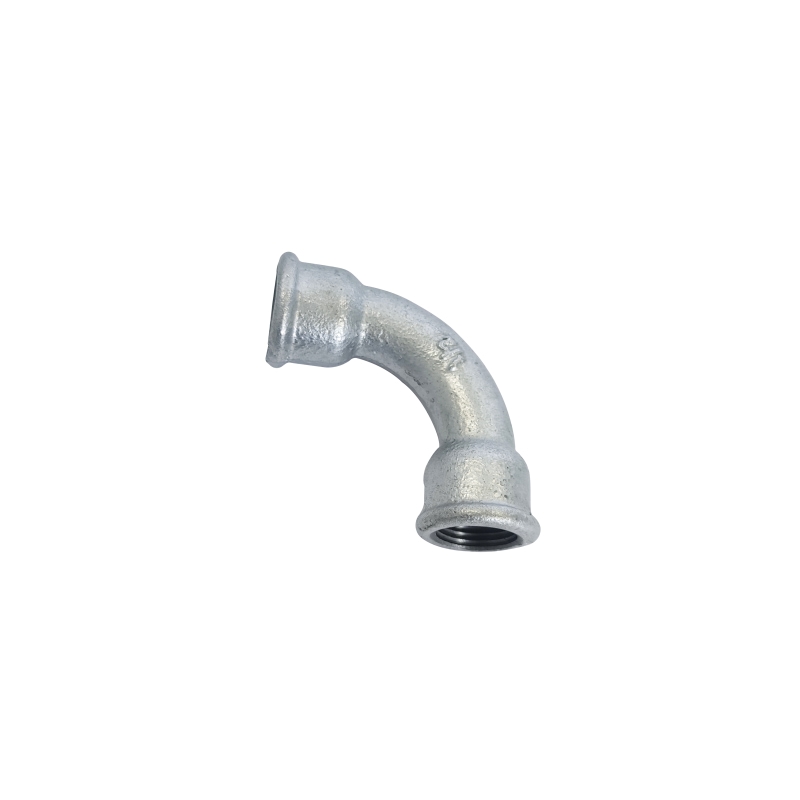
-
Forming Process (Casting, Forging, or CNC Machining):
- Casting: For larger or more complex sweep bend designs, molten metal is poured into a mold, allowed to solidify, and then extracted. This process offers design flexibility but requires meticulous control over cooling rates to prevent defects. After casting, fittings undergo extensive cleaning and fettling.
- Forging: For enhanced mechanical properties and grain structure, metal billets are heated to forging temperature and then shaped using dies and powerful presses. This process, often used for smaller to medium-sized sweep bend fittings and high-pressure applications, results in superior strength and ductility. For a female and female 90° long sweep bend, forging ensures robust end connections.
- CNC Machining (from pipe/bar): For precision fittings, especially those requiring specific wall thicknesses or unique end preparations (like the female threaded ends on our product), CNC (Computer Numerical Control) machining from solid bar stock or seamless pipe sections is employed. This method ensures exceptional dimensional accuracy and surface finish.
Key Node: Precise temperature control and die alignment are critical during forming to achieve the desired sweep bend radius and prevent material stress.
-
Heat Treatment:
Description: After forming, fittings undergo specific heat treatment processes (e.g., annealing, normalizing, quenching, tempering). This step is vital for relieving internal stresses, refining grain structure, and optimizing mechanical properties such as hardness, strength, and toughness. The specific treatment depends on the material grade and required application performance.
Key Node: Computer-controlled furnaces maintain precise temperature profiles for uniform metallurgical transformation.
-
Machining & End Preparation:
Description: Post-heat treatment, the sweep bend fittings are machined to their final dimensions. This includes facing, chamfering, and preparing the ends for connection (e.g., creating the female threads for a female and female 90° long sweep bend, or precise butt-weld bevels). CNC machining ensures tight tolerances and a smooth surface finish.
Key Node: Automated lathes and milling machines ensure precise thread cutting and dimensional accuracy according to ASME B1.20.1 standards for NPT threads.
-
Surface Treatment & Cleaning:
Description: Fittings are cleaned to remove scale, oil, or debris. Depending on the material and application, surface treatments such as pickling, passivation (for stainless steels to enhance corrosion resistance), or specialized coatings may be applied.
Key Node: Passivation baths are meticulously controlled to ensure a uniform and effective chromium oxide layer on stainless steel products.
-
Non-Destructive Testing (NDT) & Quality Control:
Description: Each sweep bend undergoes rigorous quality inspections at various stages, including final NDT. This includes:
- Visual Inspection: Checking for surface defects, cracks, and dimensional conformity.
- Dimensional Inspection: Using calipers, micrometers, and CMMs (Coordinate Measuring Machines) to verify all dimensions against drawings and standards (e.g., ASME B16.9, MSS SP-43).
- Hydrostatic Testing: For pressure-retaining components, fittings are tested at pressures significantly higher than their rated working pressure to ensure structural integrity and leak-tightness.
- Magnetic Particle Inspection (MPI) / Dye Penetrant Inspection (DPI): To detect surface and near-surface flaws.
- Ultrasonic Testing (UT) / Radiographic Testing (RT): For detecting internal defects in critical applications, ensuring the structural integrity of the entire sweep bend.
Key Node: Certified NDT technicians and calibrated equipment ensure compliance with international codes like ASME B31.3 for process piping.
-
Marking & Packaging:
Description: Finally, fittings are permanently marked with essential information, including material grade, manufacturer's logo, size, schedule, and heat number for full traceability. They are then carefully packaged to prevent damage during transit, often with protective caps on threaded ends for the female and female 90° long sweep bend.
Key Node: Traceability from raw material to finished product is maintained through unique heat numbers and batch records.
Our adherence to standards such as ISO 9001 (Quality Management), ANSI B16.9 (Factory-Made Wrought Butt Welding Fittings), and specific material standards ensures that every sweep bend we produce delivers exceptional performance and an extended service life. For instance, fittings used in severe corrosive environments, verified by ASTM G48 (Pitting and Crevice Corrosion Testing) and NACE MR0175 (Sulfide Stress Cracking Resistance), demonstrate superior longevity.
Applications and Advantages of Sweep Bend Fittings Across Industries
The superior fluid dynamics offered by the sweep bend make it indispensable across a multitude of industries, especially where fluid flow efficiency, erosion control, and system longevity are critical. The female and female 90° long sweep bend excels in scenarios requiring minimal flow disturbance.
Key Applicable Industries:
-
Petrochemical & Oil and Gas:
In upstream, midstream, and downstream operations, aggressive media (crude oil, natural gas, refined products) often contain abrasive particles or corrosive chemicals. Sweep bend fittings, including the 4 long sweep 90, significantly reduce erosion-corrosion due to their smooth flow path, which minimizes localized turbulence and impingement. This extends the lifespan of pipelines and reduces the frequency of costly shutdowns for maintenance. High-pressure applications benefit from the reduced stress concentration points inherent in a long sweep bend design, enhancing safety.
-
Metallurgy & Mining:
Slurry transport systems, common in mining and metallurgical processing, involve highly abrasive slurries. The smooth interior and gradual directional change of a sweep bend dramatically reduce wear compared to standard elbows, which would quickly erode. This leads to substantial savings in replacement costs and minimizes operational downtime.
-
Water Supply & Wastewater Treatment:
In municipal and industrial water systems, maintaining consistent flow and minimizing pressure loss is vital for energy efficiency in pumping. A 32mm swept bend or 50mm swept bend can be crucial in optimizing flow in smaller diameter lines for water distribution, while larger sweep bend fittings improve efficiency in raw water intake and treated water discharge. Reduced turbulence also means less air entrainment and quieter operation.
-
HVAC & Refrigeration:
For large-scale commercial and industrial HVAC systems, optimizing fluid flow (chilled water, refrigerants) translates directly to energy savings. The low pressure drop of a long sweep bend reduces the work required by pumps and compressors, leading to lower utility bills and a more efficient system overall.
-
Chemical Processing:
Handling corrosive chemicals requires fittings that resist degradation. Using the correct material (e.g., hastelloy or titanium for a custom sweep bend) combined with the smooth flow path minimizes contact time and localized attack from aggressive media, prolonging the integrity of the piping system.
Advantages in Typical Application Scenarios:
- Energy Savings: By significantly reducing pressure drop (minor losses), sweep bend fittings lower the energy required by pumps and compressors to move fluids through the system. For a large petrochemical plant, replacing standard elbows with long sweep bend fittings across the facility can translate to hundreds of thousands of dollars in annual energy savings. For instance, studies by the Hydraulic Institute have shown that optimizing pipe bends can reduce pump energy consumption by up to 10-15%.
- Extended Equipment Life: Reduced turbulence minimizes cavitation and erosion, which are primary causes of wear and tear on pumps, valves, and downstream equipment. This prolongs the operational life of expensive machinery and reduces maintenance cycles.
- Reduced Noise & Vibration: Less turbulence leads to quieter operation, which is beneficial in environments sensitive to noise pollution and can also indicate lower stress on the piping system itself.
- Improved Product Purity: For applications in food & beverage or pharmaceutical industries (though less common for threaded fittings, the principle applies to sanitary versions of sweep bend), reduced turbulence minimizes dead spots where contaminants could accumulate, supporting product purity and easier cleaning (CIP/SIP).
- Enhanced Safety: By mitigating erosion and reducing stress on piping, the risk of leaks, ruptures, and catastrophic failures is significantly lowered, enhancing overall plant safety.
Client Feedback & Experience
"Our transition to the female and female 90° long sweep bend from Pannext Fittings in our municipal water treatment plant has been transformative. We've seen a noticeable reduction in pump strain and a significant decrease in pipe fatigue, especially with our 50mm swept bend applications. The smooth flow has also contributed to less sediment buildup, reducing our cleaning cycles. This directly translates to operational savings and increased system reliability." - Chief Engineer, Regional Water Authority.
"In our oil refinery, where every percentage point of efficiency matters, the long sweep bend has proven invaluable. The female and female 90° long sweep bend in our specific high-velocity lines has drastically cut down on erosion issues we previously faced with standard elbows, saving us significant maintenance costs and preventing unscheduled downtime." - Process Manager, Petrochemical Major.
Choosing Your Partner: Manufacturer Comparison and Customization Solutions
Selecting the right manufacturer for your sweep bend needs is as critical as selecting the product itself. A reliable manufacturer not only provides high-quality fittings but also offers technical support, customization options, and dependable delivery. Our product, the female and female 90° long sweep bend, is a testament to our commitment to excellence.
Key Factors for Manufacturer Comparison:
- Certifications and Standards: A reputable manufacturer will possess certifications like ISO 9001:2015, demonstrating a robust quality management system. Adherence to international standards (ASME B16.9, ANSI B16.5, ASTM, DIN) ensures product compatibility and reliability. Pannext Fittings, for instance, holds ISO certification and strictly follows these international benchmarks for all our sweep bend products, including custom 32mm swept bend and 50mm swept bend solutions.
- Material Traceability and Quality: Ensure the manufacturer provides full material traceability (mill certificates, MTRs) for every sweep bend. This confirms the material's origin and properties, critical for performance and compliance, especially for specialized alloys.
- Manufacturing Capabilities: Assess whether the manufacturer utilizes advanced manufacturing techniques such as precision casting, multi-axis CNC machining, or specialized forging processes. These methods are crucial for producing the precise curvature and robust structure of a long sweep bend.
- Testing and Quality Control Protocols: Inquire about their in-house testing capabilities (hydrostatic testing, NDT, material analysis). Comprehensive quality control is vital for defect-free sweep bend fittings.
- Experience and Industry Reputation: Longevity in the industry, positive client testimonials, and a portfolio of successful projects (especially involving complex 4 long sweep 90 or other sweep bend applications) are strong indicators of reliability and expertise.
- Customer Support and Technical Expertise: A responsive and knowledgeable technical support team is invaluable for addressing specific application challenges, guiding material selection, and assisting with installation guidelines.
Customization Solutions: Tailored Sweep Bend for Unique Challenges
While standard fittings like the female and female 90° long sweep bend meet many requirements, complex industrial projects often demand bespoke solutions. Customization of sweep bend fittings involves adjusting various parameters to perfectly fit unique operational conditions or spatial constraints.
- Specific Radii: Beyond the standard 1.5D, some applications might require even longer sweep radii to achieve minimal pressure drop or to accommodate pigging operations in pipelines. We can engineer sweep bend fittings with custom radii to optimize flow characteristics for your specific system.
- Non-Standard Dimensions: Projects may call for intermediate sizes (e.g., between 32mm swept bend and 50mm swept bend) or specific wall thicknesses not covered by standard schedules. Our CNC machining capabilities allow for precise fabrication to such custom specifications.
- Exotic Materials: For highly corrosive, high-temperature, or high-pressure environments, standard carbon or stainless steels may not suffice. We offer sweep bend fittings in exotic alloys like Inconel, Monel, Hastelloy, Titanium, and high-grade Duplex/Super Duplex stainless steels, ensuring maximum resistance to specific media.
- Special End Connections: While our featured product has female threaded ends, custom solutions can include male threaded ends, specific flange types (e.g., RTJ, weld neck), or specialized grooved ends for unique coupling systems.
- Surface Finish & Coatings: For sanitary applications or those requiring ultra-smooth internal surfaces to prevent fouling or reduce friction, specialized polishing or internal coatings can be applied to the sweep bend.
Our engineering team works closely with clients through a detailed consultation process, from initial design concept to final production, ensuring the customized sweep bend perfectly integrates into your system and delivers optimal performance.
Application Cases and Real-World Impact
The impact of selecting the correct sweep bend goes beyond theoretical advantages, translating into tangible benefits in real-world applications. These case studies (illustrative) highlight how the female and female 90° long sweep bend and similar configurations contribute to operational success.
Case Study 1: Crude Oil Pipeline Optimization
Challenge: A major oil and gas company was experiencing significant erosion and pressure drop at directional changes in a high-velocity crude oil transfer pipeline. Traditional short-radius elbows required frequent replacement (every 18-24 months) and contributed to higher pumping costs due to increased friction loss.
Solution: The company replaced critical 90° elbows with our custom-engineered 4 long sweep 90 fittings, fabricated from API 5L Grade X65 carbon steel. The extended radius of the sweep bend dramatically smoothed the flow path.
Results:
- Reduced Erosion: Inspections after 3 years showed minimal signs of internal erosion, extending the expected service life by over 100%.
- Energy Savings: Measured pressure drop across the bends decreased by an average of 35%, leading to a 7% reduction in overall pumping energy consumption for that section of the pipeline, translating to annual savings of approximately $150,000.
- Maintenance Reduction: Maintenance intervals for these sections extended to 5+ years, drastically reducing operational expenditure and downtime.
Case Study 2: Water Treatment Plant Expansion
Challenge: A municipal water treatment facility needed to expand its treated water distribution network. The design called for numerous directional changes, and the client was concerned about maintaining flow efficiency and minimizing noise in a densely populated area. They required reliable 32mm swept bend and 50mm swept bend connections for various branches.
Solution: We supplied thousands of female and female 90° long sweep bend fittings in SS316L, chosen for its excellent corrosion resistance in potable water applications and its superior flow characteristics. The threaded ends allowed for quick and secure installation.
Results:
- Optimized Flow & Energy Efficiency: The smooth geometry of the long sweep bend ensured consistent water pressure and minimized head loss throughout the new sections, supporting the overall energy efficiency goals of the plant.
- Reduced Noise: Operators reported a noticeable decrease in hydraulic noise from the piping compared to older sections using standard elbows, contributing to better environmental compliance and working conditions.
- Installation Ease: The precise threading of the female and female 90° long sweep bend expedited installation, keeping the project on schedule and within budget.
Establishing Trust and Authority: Our Commitment
At Pannext Fittings, our reputation is built on a foundation of trust, transparency, and authoritative expertise. We understand that choosing a supplier for critical components like the sweep bend requires confidence in their capabilities and commitment to quality.
Authoritativeness & Industry Recognition:
- Certified Quality: We are proud to be an ISO 9001:2015 certified manufacturer, a globally recognized standard for quality management systems. This certification underscores our unwavering commitment to consistent product quality and customer satisfaction across all our products, including every female and female 90° long sweep bend.
- Adherence to International Standards: Our manufacturing processes and finished products comply strictly with leading industry standards such as ASME B16.9 (for factory-made wrought butt welding fittings), ANSI B16.5 (for pipe flanges and flanged fittings), ASTM (for material specifications), and MSS SP-43 (for wrought stainless steel butt-welding fittings), ensuring interoperability and reliability in global projects.
- Experienced Engineering Team: Our team comprises highly experienced metallurgists, mechanical engineers, and production specialists with decades of combined experience in fluid dynamics and pipe fitting manufacturing. This expertise allows us to not only produce standard sweep bend products but also to engineer complex, customized solutions for challenging applications.
- Strategic Partnerships: We have established long-term relationships with leading EPC (Engineering, Procurement, and Construction) firms, oil & gas majors, and industrial clients worldwide, serving as a trusted supplier for their critical piping needs.
- Years of Service: With over X years (insert actual years here if applicable, e.g., 20+) in the industry, we have accumulated extensive knowledge and practical experience in overcoming diverse fluid transfer challenges.
Trustworthiness & Customer Support:
- Transparent Processes: We maintain full traceability of our raw materials and manufacturing steps, providing comprehensive material test reports (MTRs) and quality documentation with every shipment. Clients can be confident in the integrity of every sweep bend they receive.
- Delivery & Logistics: We understand the importance of timely delivery in project execution. Our streamlined logistics and production planning ensure that your female and female 90° long sweep bend orders, whether for a standard 50mm swept bend or a custom 4 long sweep 90, are delivered efficiently and on schedule. Typical lead times are communicated clearly at the time of order confirmation.
- Comprehensive Warranty: All our sweep bend products are backed by a robust warranty against manufacturing defects, reflecting our confidence in their quality and durability. Details of our warranty policy are available upon request, ensuring peace of mind for our customers.
- Dedicated Customer Service: Our responsive customer support team is available to assist with inquiries, technical specifications, order status, and post-sales support. We prioritize clear communication and proactive problem-solving to ensure a seamless experience.
By upholding these principles, Pannext Fittings aims to be not just a supplier, but a reliable partner in your success, providing sweep bend solutions that excel in performance and longevity.
Professional FAQ: Understanding Your Sweep Bend
References and Further Reading
-
Hydraulic Institute (HI): For comprehensive data on fluid dynamics and pump system efficiency, including best practices for piping design.
https://www.pumps.org/Standards-Education/Standards-Learning.aspx -
American Society of Mechanical Engineers (ASME) & American National Standards Institute (ANSI): Key standards bodies for piping components.
https://www.asme.org/codes-standards/publications/mechanical-engineering/piping-pipeline
https://www.ansi.org/standards_development/standards/b16_standards -
Materials Performance (MP) Magazine / NACE International: For insights into corrosion and material selection in industrial environments.
https://www.nace.org/publications/materials-performance -
Journal of Petroleum Technology (JPT): For articles on pipeline integrity and flow optimization in the oil and gas sector.
https://www.spe.org/jpt/jpt-article-listing -
Grand View Research - Industrial Valves & Fittings Market Analysis:
https://www.grandviewresearch.com/industry-analysis/industrial-valves-fittings-market (Note: Specific data points may require subscription or detailed report purchase.)
Post time: Th8-08-2025


